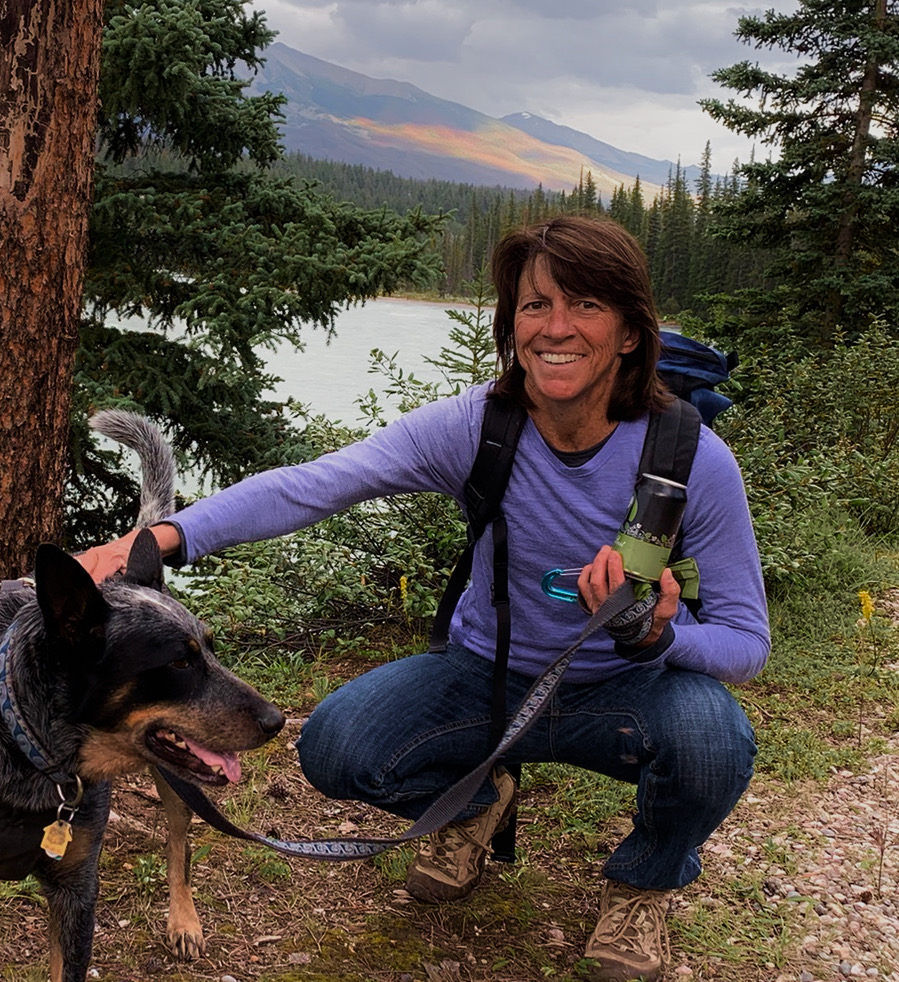Some information may be outdated.
A Q&A with Peggy Hodgkins
In 2017, Peggy Hodgkins was a volunteer DJ at KZMU radio when she met Kristina Young, the founder of Science Moab. Young was just starting to create the Science Moab podcast and radio show, which interviews regional scientists about their work, and Hodgkins volunteered to help with production.
She’s worked with Science Moab ever since, eventually becoming the nonprofit’s outreach director.
Now, she’s pitching in to the nonprofit’s Science Certified program—a customized training offered to recreation guides that teaches place-based science and communication—as a geology instructor.
The Moab Sun News chatted with Hodgkins about her career in geology and what the instructor role entails.
Moab Sun News: Why did you study and pursue geology, and what do you enjoy about it?
Hodgkins: I was interested in the beginning in being outside, and gaining a deeper appreciation for what was around me. Studying things that you can then observe outside and see in action is really cool.
I grew up on the Gulf Coast, and to me, mountains were very foreign—I was fascinated by mountains and rocks because I just wasn’t familiar with them. I think a lot of geologists get into it because they love being outdoors, and learning outside.
MSN: What does a Science Certified instructor do?
Hodgkins: Science Certified right now has a few basic modules: ecology, Leave No Trace, and geology. The geology module is focused primarily on the geology around Moab, which is nothing to shake a stick at—it’s very complicated. It’s super interesting, and there’s a lot to learn.
A lot of the training depends on the group: most of the time, we go through all the modules in one big day, with each module taking around two hours. But sometimes groups will pick and choose. So I’ll show up and talk geology for as long as people are willing to listen to it.
It’s difficult because I’m trying to compress a lot of background and knowledge into a short time: I’m looking forward to it, but I’m slightly apprehensive until I do it a few times to get it right. Two hours isn’t a lot, but I’ve been to several trainings with Chris Benson, who has been teaching the geology module, so I have an idea of how to go about compressing everything. It’ll be a challenge! But I’m looking forward to it.
MSN: Why focus on learning local geology?
Hodgkins: Anything you do around Moab—whether you’re on the river, you’re Jeeping, you’re biking—you are in the geology, and a lot of what you’re doing has been created because of the geological processes here.
I think what’s cool about educating guides, who then educate their clients, is giving them a deeper appreciation of their surroundings. Even if you’re not into rocks, it’s hard to come to Moab and not have questions like, why are those cliffs there? Why are they red? What are the black stripes coming down the rocks? Why do so many arches form here? Those things are unique to the geology of Moab. Whether the clients ask those questions or not, guides can prompt them, and then have the answers.
I’m hoping that’s what guides get out of the training, and I hope that’s why they do the course in the first place. We want them to come wanting to learn more, so they can transfer that knowledge to clients.
MSN: What else about the program is important to you?
Hodgkins: I think it’s a great program to educate the guides. There are so many guiding companies here that I think it’s a worthwhile asset. The whole program too is so important: everyone’s trying to drive home Leave No Trace, because with more tourism comes more wear and tear on our backyard and our wilderness. The only way to help with that is education—the more someone knows about a place, the more they want to protect it.
Appreciate the coverage? Help keep local news alive.
Chip in to support the Moab Sun News.





